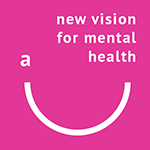This article (2011) by Dr. Marcia Angell (ex-editor of the New England Journal of Medicine) has been published by The New York Review. It begins:
“In my article in the last issue, I focused mainly on the recent books by psychologist Irving Kirsch and journalist Robert Whitaker, and what they tell us about the epidemic of mental illness and the drugs used to treat it. Here I discuss the American Psychiatric Association’s Diagnostic and Statistical Manual of Mental Disorders (DSM)—often referred to as the bible of psychiatry, and now heading for its fifth edition—and its extraordinary influence within American society. I also examine Unhinged, the recent book by Daniel Carlat, a psychiatrist, who provides a disillusioned insider’s view of the psychiatric profession. And I discuss the widespread use of psychoactive drugs in children, and the baleful influence of the pharmaceutical industry on the practice of psychiatry.
One of the leaders of modern psychiatry, Leon Eisenberg, a professor at Johns Hopkins and then Harvard Medical School, who was among the first to study the effects of stimulants on attention deficit disorder in children, wrote that American psychiatry in the late twentieth century moved from a state of “brainlessness” to one of “mindlessness.” By that he meant that before psychoactive drugs (drugs that affect the mental state) were introduced, the profession had little interest in neurotransmitters or any other aspect of the physical brain. Instead, it subscribed to the Freudian view that mental illness had its roots in unconscious conflicts, usually originating in childhood, that affected the mind as though it were separate from the brain …”
You can find out more from here.




